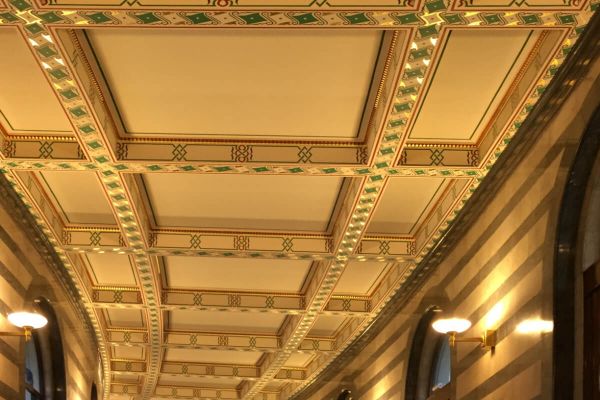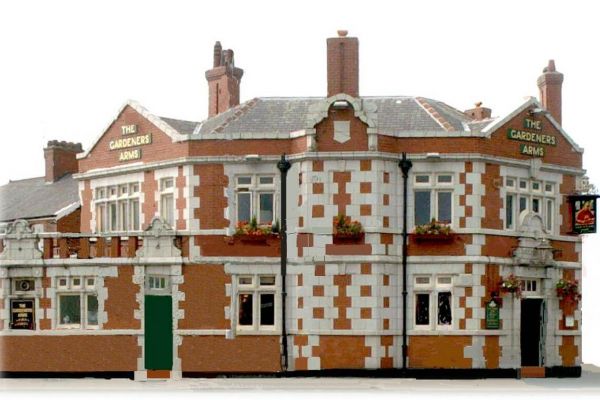
MLFHS: Our History
MLFHS - Our History
Manchester and Lancashire Family History Society did not arrive into the world fully-fledged, it was built over nearly six decades by a succession of enthusiastic volunteers who worked to bring together family historians who shared an interest in Manchester. Slowly, we developed from a small nucleus of members meeting in public halls into today's large society with a permanent base in Manchester Central Library, an international membership who can exchange ideas online and a large and growing collection of local resources. Here's a brief history of how we got to where we are today.
1964: Off to a flying start
One evening in February 1964 a group of workers from the Avro aircraft factory in Chadderton got together at the Gardeners Arms in Moston to share their interest in family history. From this first meeting the 'Manchester Genealogical Society' emerged. Nearly six decades later the society is still thriving as one of the largest and most active family history societies in the United Kingdom.
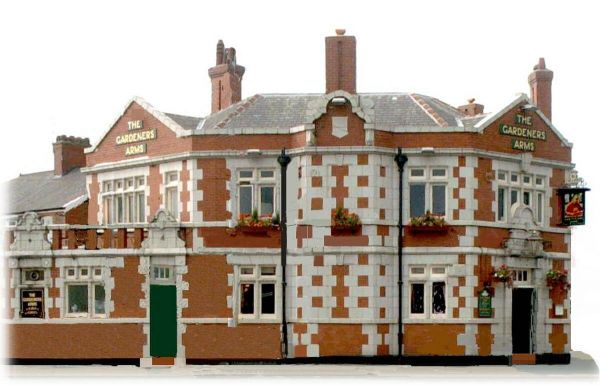
1965: Living out of a suitcase
Like most family history societies, our early meetings took place in rented rooms and our modest collection of materials was carried to-and-fro in boxes. The first meetings of the newly founded society were held at the Central Hall in Oldham Street in Manchester. In 1973 we adopted our present name of the 'Manchester and Lancashire Family History Society', but although the society was by then seven years old, membership still numbered only 66. Over the next eight years meetings moved around the city at various times meeting in Central Hall, Fernley House in St. Ann's Churchyard, the Thompson's Arms in Chorlton Street and finally the Scout and Guide Hall in Faraday Street. In the absence of a permanent office, all of the administration was carried out from members' homes.
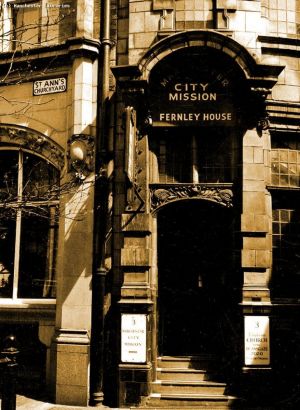
This lack of a permanent base did not stop us from taking on a wide variety of projects. From the very beginning we were active in making valuable resources more easily and widely available. Robert Chorlton, one of our founding members, transcribed many of the surviving memorial inscriptions in local churchyards and deposited copies of the typescripts in Central Library to ensure wider access. These are perhaps the first of the society's projects. However more and bigger were to come. Around 1978 we joined the Federation of Family History Societies' project to produce a surname index to the census returns for 1851 and extended this to transcribing the water-damaged returns which led to a decade of rewarding work at The National Archives. As technology advanced, we moved from publishing the resulting transcripts and indexes in printed booklets to the more economical medium of microfiche, which allowed us to make large indexes available at low cost.
By 1980, in no small part as a result of a popular TV series tracing the ancestry of newsreader Gordon Honeycombe, membership had risen dramatically to 530, of whom 130 lived outside the UK. This change in fortunes allowed us for the first time to move into permanent premises.
1982: Three decades on Piccadilly
Clayton House, facing Piccadilly Gardens, was an excellent central Manchester location. The building, erected in 1907 is impressive from the outside, but the 5th floor rooms which we leased needed considerable refurbishment, so although discussions started in 1980, it was not until 8 May 1982 that our library was able to open to members. Having a permanent home allowed us to build the library to a collection numbering several thousand printed, microfilm/fiche and later CDROM resources and provided space for an administration office. There was still not enough room to hold member meetings and so we continued to hold these in the Scout and Guide Hall. In this same year we became a registered charity.
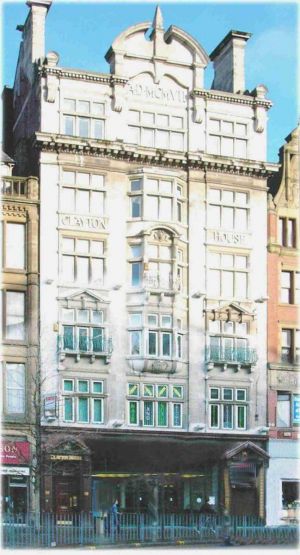
The 1980s were a period of further expansion and by 1990 our membership was approaching 4,000. When the lease on our rooms expired in 1992, we were fortunate that larger rooms on the third floor of Clayton House had become vacant and so we were able to expand the library without the need for a major move. The new rooms allowed us not simply to expand the library, but also to open a bookshop and to provide a very welcome tea room for members. The rooms were even large enough (with some impressive rearrangement of the furniture) to accommodate up to 50 members and allow us for the first time to host our own meetings.
Steady growth continued through the 1990s and an apparent 'millennial' effect saw a record 911 new members joining in 2000, bringing membership to its peak of around 4,500. This effect was, however, not to last and as the first decade of the new millennium progressed, in common with most other family history societies, membership began to decline, an effect further aggravated by the rise of the internet. As the end of the decade and the end of our lease approached, it was clear that the liability of our premises was becoming problematic. But a solution was already on the horizon.
1985: The invasion of the machines
How did we ever manage a society of this size without computers? The first mention of computers to help with office administration came in 1985 but this appears to have been limited to automating tasks such as printing mailing labels and form letters. In 1987 the (then) considerable sum of £3,000 was used to purchase a computer and laser printer but it took until 1991 for the membership records to be computerised (using Dbase IV for those with a long memory). This considerably improved the administration of membership changes, though only two people ever really knew how to run the system properly! In 2002 the membership records were migrated onto a more user-friendly platform. Around the same time, computers started to appear in the library, primarily to enable members to access the increasing number of resources becoming available on floppy disk and later CDROM.
Computers not only invaded the office and the library, but there was increasing interest in computing in general and a computer group was formed in 1991 to share expertise and to help members learn how to apply this exciting (and frustrating) technology to their research. We were fortunate in having the services of Phil Stringer, one of the founders of the GenUKI web site, as a member and in 1995 Phil set up an e-mail group for members, the forerunner of today's Member Forum.
In the same year, the society made its debut on the internet as a section of GenUKI and enrolled its first member via the innovation of a form, which could be printed out and mailed. This was soon replaced by a dedicated web site.
The wider availability of computers also saw changes to our project activity. By 2000, not only were computers used to compile the project results, but publication began to move away from microfiche and onto CDROM, another inexpensive medium and one with the attraction that the content was easily searchable. But while microfiche had been the 'hot' technology for nearly 30 years, within ten years, CDROM was already yesterday's technology. For the past decade, transcripts and indexes emerging from our projects have almost all been published online. This allows us to make material available to all of our members at almost negligible cost and some of it is available to non-members through platforms such as Findmypast and Deceased Online.
2014: A new era
We had been in discussions with Manchester Archives and Local Studies for some years about the move of Archives from Central Library to a new location and for the society to have accommodation in the new centre. Efforts to secure a new site in the Northern Quarter foundered through funding difficulties but the idea of a joint archive to accommodate a partnership of Archives and Local Studies, The Greater Manchester Record Office (then in very unsatisfactory accommodation in Marshall Street) and the society lived on. Finally, a decision was made to completely refurbish the Central Library building and in April 2014 the library re-opened. The original partnership was expanded to include the North West Film Archive and the Ahmed Iqbal Ullah Race Relations Library and Resource Centre under the name Archives+.
As a part of the partnership agreement, the society undertook to provide a public family history help desk service. This is possibly the most substantial such service provided by any family history society in the UK with four volunteers available, five days a week, to assist visitors with their research. Typically around 4,000 enquiries are handled each year.
There have been many gains from the partnership. One of the most visible is that we are no longer constrained when holding meetings, with a 100 seat 'Performance Space' available. Less visible, but with a considerable impact on our project work is that since we are on the same site as Archives, we can easily access archival material for transcription and indexing. We also have access to a digital scanner capable of scanning up to A2 size. Several projects have already taken advantage of these facilities including our current work to index the admission registers of the royal Manchester School for the deaf and Dumb.
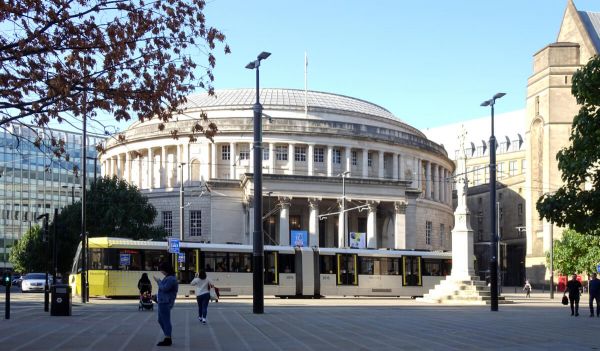
2020: A new look
To continue our transformation from our origins of paper to the vibrant, fast online world of the 2020s, Manchester & Lancashire Family History Society is focusing more than ever on its online presence. We now have a thoroughly modern website and a new logo featuring the fresh, easy to remember name of Manchester Ancestors. We have just one purpose: to make it easier than ever for you to research your family history in Manchester, Bolton, Oldham and the Greater Manchester area. We will help you to get started or to demolish those brick walls. A modern family history society with solid roots and an eye to the future. Come and join us!
...and the future?
Whatever the future holds, we are ready for it! The coronavirus 'lockdown' has taught us a lot about video conferencing and this is likely to find a place in how we work in the future. Similarly, we have been able to harness more of our members in indexing projects which can be carried out from home and as a result have added over 50,000 new records to our already extensive Manchester burials index. Now well into our sixth decade, we are not about to sit back on our laurels. Bring it on!

